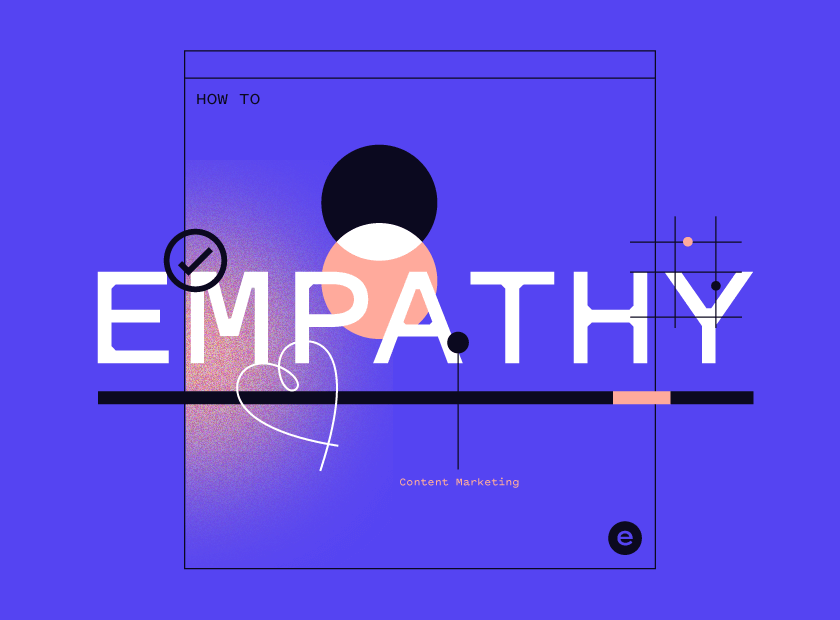Ultimately, all content marketers want the same thing: to create compelling content that converts. Unfortunately, many marketers often confuse quantity with quality, churning out piece after piece that gets lackluster results. They look at content marketing as a numbers game, thinking they just need to produce a massive volume of content and surely something will stick. When their content doesn’t work, they blame the design, the timing, the distribution strategy—basically everything but the core problem. (Trust me, as the cofounder of a content marketing agency with a decade of experience, I’ve seen this happen over and over again.) However, when it comes to marketing your brand, there is one simple truth: If a piece of content fails, it’s because it did not speak to its audience.
At its core, successful content marketing is about engaging with people through content—not talking at them or selling to them. If your content isn’t made with your audience’s unique needs or interests in mind, you won’t be able to engage with them in any sort of genuine way. You won’t move them down the path to purchase. You won’t even grab their attention for more than a second.
Luckily, there is one way to ensure your content is meaningful, relevant, and effective: Use empathy.

What Is Empathy?
According to Merriam-Webster, empathy is the ability to understand and share the feelings of others. As Dr. Brené Brown notes, empathy is “feeling with people.”
In the context of content marketing, feeling with people is about understanding your audience’s needs, putting yourself in their shoes to understand the challenges they face, and creating content that speaks to those unique issues.
The #1 thing that contributes to content marketing success is the value it provides.
“Yeah, but isn’t content marketing about educating others?” Sure—if it’s educating them about the things they need and want to know.
Empathy is not talking about yourself, your services, your pricing, and how great you are. It is not newsjacking in a desperate attempt to create relevance. (Does a SaaS company that operates in the financial service industry need to be commenting on what Kanye West is up to? Probably not.) Empathy in content marketing is simply about putting your audience’s needs first.
This doesn’t mean you can’t ever ask your audience to sign up for a newsletter or download an e-book. It just means you should prioritize compelling content that attracts them to you so that you can offer those goods and move them along the buyer journey.
Why Should You Use Empathy In Your Content Marketing?
Leading with empathy helps you create far superior content that is more meaningful, memorable, and effective.
- Empathetic content grabs people’s attention. Empathy helps you meet your audience where they’re at. A catchy headline that speaks to someone’s immediate challenges is much more effective than a sales-y listicle about all of the reasons they “need” your product.
- Empathetic content strengthens your relationship with your audience. When you can clearly communicate that you understand your audience’s struggle and have the expertise to help solve their problem, your audience will see that you really care, which makes them more eager to form a relationship with you. And if you can create content that helps reduce your audience’s pain and frustration, your brand will automatically become the hero.
- Empathetic content improves ROI. No one wants to waste time, money, or energy on content that doesn’t move the needle. Building your content strategy around empathy ensures that the content you do make speaks to your audience, makes a bigger impact, and makes them more likely to convert.
But what does empathy look like in your day-to-day practice? We’ll break it down for you.
How to Employ Empathy In Your Marketing
When you’re marketing your brand, there are three simple steps to ensure you’re coming up with empathetic marketing ideas that will connect with the right people.
1) Develop marketing personas.
A friend recently said to me, “When you’re thinking about content, consider the hell that your clients are trying to escape from and the heaven that you want to deliver them to.” While this might be a dramatic statement, it certainly works for content marketing, especially when your goal is lead generation or increasing sales.
Of course, to understand your clients’ hell, and what will appeal to them, you need to know exactly who they are. Creating customer personas (also known as “psychographic mapping”) is the first step to really understanding your audience.
When you know your audience’s specific pain points, wants, and needs, you have much better insight to fuel your content brainstorms later on.
How to do it: Start with our free guide and template to create your own marketing personas. Having direct conversations with existing customers will ensure you get the most accurate perspective, but accessing any available research about your target audience (e.g., surveys, research, reports) can also provide helpful insight.
To pursue empathetic content marketing, make this your mantra: Sell less, listen more.
2) Brainstorm around your personas’ pain points.
During brainstorms, content marketers often ask, “What kind of content will help me sell more?” That’s the wrong way to look at things. Instead, you should ask, “What kind of content will provide so much value to readers that it will attract customers?”
According to the Content Marketing Institute’s 2022 B2B Content Marketing report, 87% of the most successful marketers prioritize their audience’s needs over their organization’s message.
To start your brainstorm the right way, do a brain dump of the general topics, issues, or ideas that you know your audience will be interested in. You will refine specific ideas later, but this is the time to identify the core subjects that will attract their attention. (Note: Pain points are good to hone in on because they are usually the things people have the strongest emotional reaction to.)
How to do it: One great way to get inside your audience’s mind is to do a little online research about what people are searching for or talking about. For example, AnswerThePublic is a handy tool that shows you all of the questions people are asking about a particular topic. These questions can be great content themselves (e.g., The Ultimate Guide to _______) or help you hone in on relevant subjects within your expertise.
You might also look around to see what other people in your industry are saying about a topic, then take a better or opposing stance. (A strong stance is a great way to pique your audience’s interest.)
3) Add even more value.
It’s easy to get excited about a cool idea, but if you can’t justify how or why your target audience will really be interested in it, it won’t help you achieve your goals.
So, once you’ve brainstormed your general ideas, you need to take it a step further to refine and vet your best ideas through your personas. (Note: This is the most important step of any brainstorm—and especially crucial to tap into the underlying empathy you want your content to convey.)
Whether your content is educational, inspirational, or entertaining, the more your ideas provide unique value to your audience, the better your content will be.
How to do it: Identify your best ideas, then go through them one by one to identify what pain point, need, or want they speak to. You may find some ideas don’t hold water, but you may also be able to refine your ideas to make them more interesting and specific. (We’ve often seen a so-so idea become a killer story by tweaking the angle slightly.) If you’re struggling to refine your ideas, ask these questions to make them more impactful.
- What practical knowledge or skill can you deliver? Things like tutorials, tips, hacks, how-tos, etc. can solve problems and help your audience save time, money, or frustration. The more helpful your content is, the more your audience will come to see you as a trusted resource.
- What resources can you create to help them apply this newfound knowledge? Templates, guides, toolkits, maps, calculators—there is all sorts of supplemental content that can be incredibly valuable to your audience. (For example, we’ve designed camping guides for Coachella and walking maps of San Francisco for conferences.)
- What similar paint points have you faced? Sharing your greatest lessons or mistakes can be a great way to humanize your brand, demonstrate empathy, make your audience feel less alone, and provide valuable solutions.
- What escape do they need/want? Your content doesn’t always have to be strict thought leadership. Humorous or entertaining content can be a welcome distraction for your audience (and a great way to grab their attention). For example, when we got fed up with all of the buzzwords and fluff we see in the marketing world, we created the Marketing Gibberish Generator to help social-guru-rockstar-ninjas BS their way through their next marketing meeting.
For more tips, here are 7 ideas to create content that provides true value. And see these 15 examples of empathetic content marketing in action.
How to Keep Connecting with Your Audience
Empathetic content marketing isn’t a one-time task; it’s an ongoing practice. Keep listening, keep reflecting, and keep looking for unique ways to engage with your audience. While your content strategy may change each quarter, keep empathy at the center and you’ll always be working toward the right thing.
That said, there are a few more things to keep in mind as you build your content practice.
- Choose the right format. In content marketing, the medium is just as important as the message. If you’re not sure which format to choose, see our breakdown of content marketing formats to find out what type might work best for your goals.
- Maximize your content. As a marketer, you want to get the most mileage from every piece of content you create. Find out how to use a divisible content strategy to make more content with less work.
- Strengthen your strategy. Make sure you have a clearly documented content strategy that keeps everyone on the same page.
- Measure your success. As much as empathetic content marketing relies on emotion, you want to see tangible evidence that your content is emotionally connecting. Make sure you have the right measurement infrastructure set up, and find how to choose the right metrics from the jump.
Of course, we know this work doesn’t happen overnight. If you’re over-extended or just plain stuck in your marketing, some expert support can help. See our tips to find the right content agency, learn more about what it’s like to work with us on your content strategy, or reach out directly. We’d love to help you give your audience the content they deserve.






